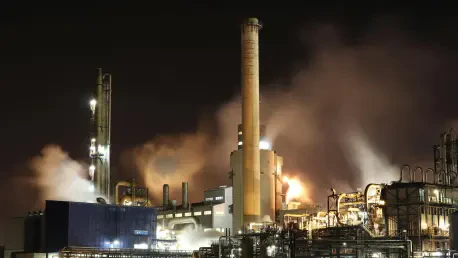In an era where renewable energy sources like solar and wind are hailed as the future of power generation, it’s both surprising and concerning to witness coal—an energy source long associated with pollution and outdated technology—staging a notable resurgence in the United States. Despite global commitments to cleaner alternatives, coal has reemerged as a critical player in meeting the nation’s accelerating power demands. This revival is largely fueled by the rapid growth of artificial intelligence (AI) and data centers, which require vast amounts of reliable energy. As policymakers grapple with balancing grid stability and environmental goals, coal is being positioned as a temporary bridge fuel. This unexpected trend raises questions about the complexities of the energy transition, where immediate needs often clash with long-term sustainability objectives. The resurgence of coal underscores a pragmatic, yet contentious, approach to addressing modern energy challenges amidst a shifting policy landscape.
The Role of Coal in Powering the AI Boom
One of the primary drivers behind coal’s comeback is the unprecedented demand for electricity spurred by the AI revolution and industrial reexpansion in the United States. Data centers, essential for supporting AI technologies, consume enormous amounts of power, often requiring consistent baseload energy that renewables alone cannot yet provide at scale. Coal, which has contributed significantly to electricity generation in recent years, has been tapped to fill this gap, with facilities being repurposed or kept operational beyond planned retirement dates. Energy officials have underscored coal’s importance in maintaining grid reliability during this period of rapid growth, with substantial funding—amounting to hundreds of millions—allocated to modernize existing plants. Emergency orders and reliability agreements with major energy providers further highlight the strategic role of coal in preventing blackouts and ensuring stability. However, this reliance on a fossil fuel, even as a stopgap measure, sparks debate over whether short-term fixes undermine the broader push for a carbon-neutral future.
Balancing Reliability with Environmental Risks
While coal provides a temporary solution to surging energy needs, its resurgence is not without significant risks and uncertainties that could impact long-term energy planning. Investors and industry stakeholders remain wary, recognizing that the current momentum for coal is largely driven by policy rather than market dynamics. A shift in administration or stricter environmental regulations could quickly reverse supportive measures, leaving recently extended coal assets vulnerable to becoming stranded investments. Additionally, the delay in retiring coal plants—outpacing delays for other energy sources—reflects broader challenges in transitioning to alternatives like natural gas, where rising costs and permitting hurdles slow progress. This situation reveals a deeper tension in the energy sector, where the urgent need for reliability often overshadows commitments to cleaner technologies. As the nation has navigated these complexities in recent times, it has become evident that coal’s revival is a pragmatic response to immediate demands, yet it also serves as a reminder of the persistent hurdles in achieving sustainable energy goals. Moving forward, policymakers must prioritize accelerating renewable infrastructure while addressing baseload needs to ensure that temporary solutions do not derail environmental progress.









